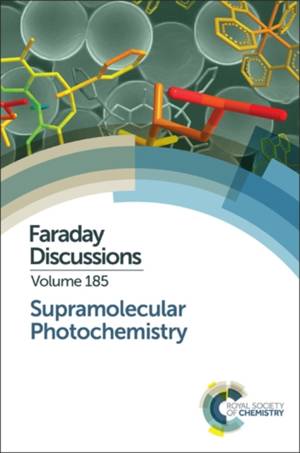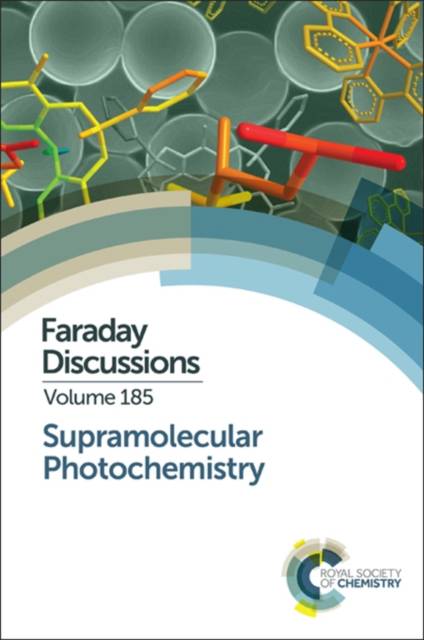
- Retrait gratuit dans votre magasin Club
- 7.000.000 titres dans notre catalogue
- Payer en toute sécurité
- Toujours un magasin près de chez vous
- Retrait gratuit dans votre magasin Club
- 7.000.000 titres dans notre catalogue
- Payer en toute sécurité
- Toujours un magasin près de chez vous
Supramolecular Photochemistry
Faraday Discussion 185
Description
Since its inception in 1987, research into supramolecular photochemistry has experienced impressive growth and now impacts on many topics. The field has now matured, taking advantage of new instrumentation and advances in synthesis, and it is time to consider where we are and where we want to be in the near future.
Following the Supramolecular Photochemistry: Faraday Discussion (September 2015), this book discusses new information derived from the study of natural systems and its use in aiding the design of artificial photosynthetic systems, such as synthetic light-harvesting antennae and molecular devices capable of efficacious charge-separation. The book explores multi-component systems where illumination induces controlled mechanical movements (machines). The effect of supramolecular assembly on the photoactivation of nanostructures such as liquid crystals and dendrimers is also considered. By studying the in-situ changes in the local topology and the concentration of selected substrates, the application of such assemblies in luminescent devices becomes a reality.
Spécifications
Parties prenantes
- Editeur:
Contenu
- Nombre de pages :
- 568
- Langue:
- Anglais
- Collection :
- Tome:
- n° 185
Caractéristiques
- EAN:
- 9781782624639
- Date de parution :
- 11-01-16
- Format:
- Livre relié
- Format numérique:
- Ongenaaid / garenloos gebonden
- Dimensions :
- 163 mm x 239 mm
- Poids :
- 952 g






